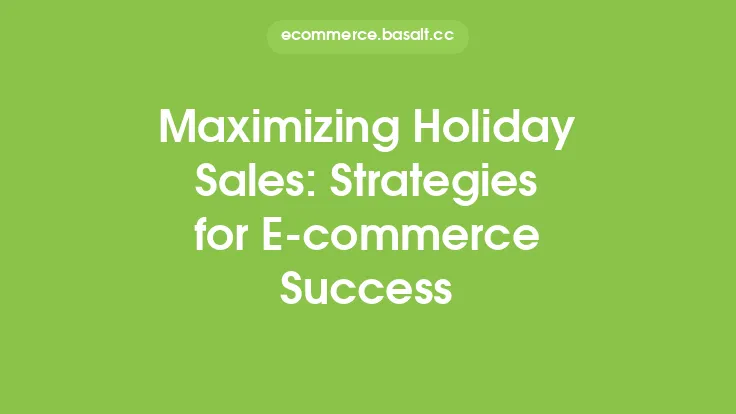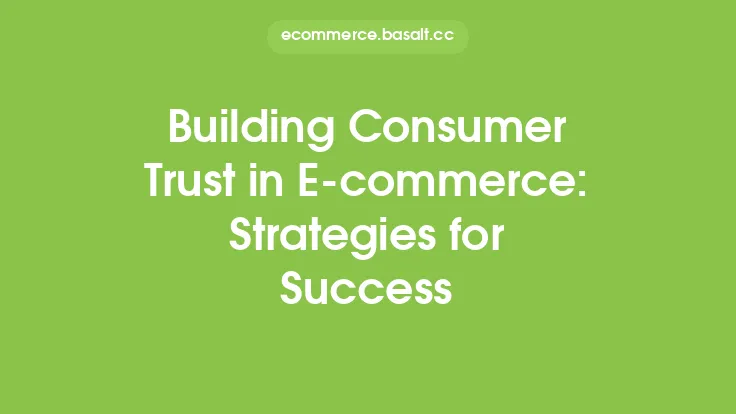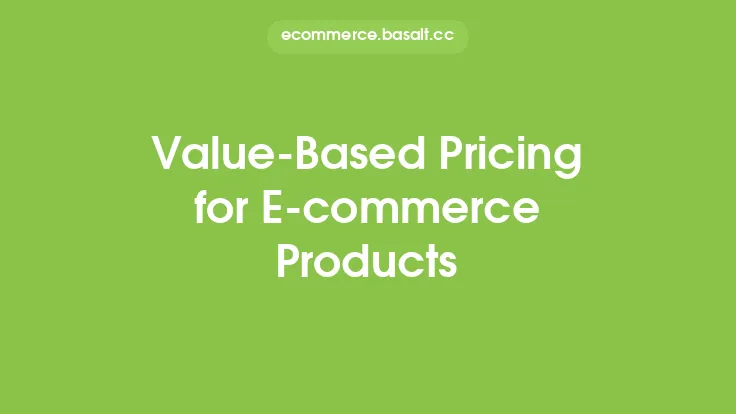In the world of e-commerce, pricing is a crucial aspect that can make or break a business. It's a delicate balance between charging enough to ensure profitability and staying competitive in the market. With the rise of online shopping, consumers have become increasingly price-sensitive, and businesses must adapt their pricing strategies to stay ahead of the competition. In this article, we'll explore the different pricing strategies that can help e-commerce businesses achieve success.
Understanding Pricing Objectives
Before diving into the various pricing strategies, it's essential to understand the pricing objectives of an e-commerce business. Pricing objectives refer to the goals that a business wants to achieve through its pricing strategy. These objectives can include maximizing profits, increasing market share, or simply covering costs. A business may also have multiple pricing objectives, and the chosen strategy should align with these goals. For instance, a business may aim to maximize profits by charging a premium price for its products, while also increasing market share by offering competitive pricing for certain products.
Types of Pricing Strategies
There are several types of pricing strategies that e-commerce businesses can use, each with its advantages and disadvantages. Some of the most common pricing strategies include cost-plus pricing, competitive pricing, and value-based pricing. Cost-plus pricing involves adding a markup to the cost of producing a product, while competitive pricing involves setting prices based on what competitors are charging. Value-based pricing, on the other hand, involves setting prices based on the perceived value of a product to the customer. Each of these strategies has its strengths and weaknesses, and businesses should choose the one that best aligns with their pricing objectives.
Pricing Strategy Considerations
When developing a pricing strategy, e-commerce businesses should consider several factors, including the target audience, market conditions, and product lifecycle. The target audience, for instance, can significantly impact pricing decisions. Businesses should consider the willingness of their target audience to pay for their products and adjust their pricing strategy accordingly. Market conditions, such as the level of competition and the state of the economy, can also impact pricing decisions. For example, during times of economic downturn, businesses may need to reduce their prices to stay competitive. The product lifecycle is another critical factor, as prices may need to be adjusted as a product moves through its lifecycle.
Pricing Tactics
In addition to pricing strategies, e-commerce businesses can also use various pricing tactics to achieve their pricing objectives. Pricing tactics refer to the specific actions taken to implement a pricing strategy. Some common pricing tactics include price discounts, price bundling, and price anchoring. Price discounts, for instance, can be used to incentivize customers to make a purchase, while price bundling can be used to increase average order value. Price anchoring, on the other hand, involves setting a high initial price to make subsequent prices appear more reasonable by comparison.
Pricing and Revenue Management
Pricing and revenue management are closely linked in e-commerce. Revenue management refers to the process of managing pricing, inventory, and availability to maximize revenue. Effective revenue management involves analyzing data on customer behavior, market trends, and product performance to make informed pricing decisions. By using data analytics and revenue management tools, e-commerce businesses can optimize their pricing strategies to maximize revenue and stay competitive in the market.
Best Practices for Pricing
To achieve e-commerce success, businesses should follow best practices for pricing. One of the most critical best practices is to conduct thorough market research to understand customer willingness to pay and competitor pricing. Businesses should also regularly review and adjust their pricing strategy to ensure it remains aligned with their pricing objectives. Additionally, businesses should consider using pricing automation tools to streamline pricing decisions and reduce the risk of human error. Finally, businesses should prioritize transparency and communication with customers, ensuring that pricing is clear and easy to understand.
Common Pricing Mistakes
Despite the importance of pricing in e-commerce, many businesses make common pricing mistakes that can harm their revenue and profitability. One of the most significant mistakes is failing to regularly review and adjust pricing strategies. This can lead to prices becoming outdated and uncompetitive, resulting in lost sales and revenue. Another common mistake is not considering the psychological impact of pricing on customers. For example, businesses may use pricing tactics like price anchoring or charm pricing (ending prices with .99 or .95) to influence customer perception and increase sales. By avoiding these common pricing mistakes, e-commerce businesses can optimize their pricing strategies and achieve success in the market.
Future of Pricing in E-commerce
The future of pricing in e-commerce is likely to be shaped by technological advancements, changing consumer behavior, and increasing competition. One of the most significant trends is the use of artificial intelligence (AI) and machine learning (ML) to optimize pricing decisions. These technologies can analyze vast amounts of data on customer behavior, market trends, and product performance to provide real-time pricing recommendations. Additionally, the rise of voice commerce and mobile shopping is likely to impact pricing strategies, as businesses will need to adapt to new customer behaviors and preferences. By staying ahead of these trends and adapting to changing market conditions, e-commerce businesses can ensure their pricing strategies remain effective and competitive.





